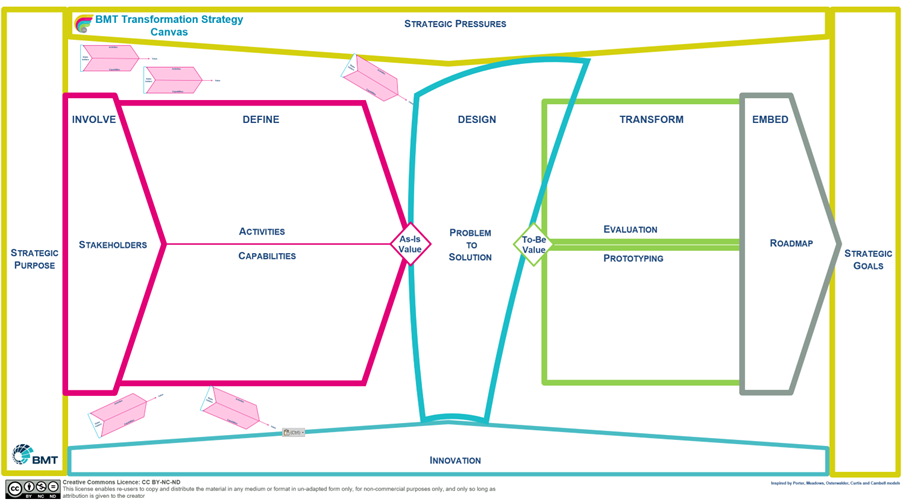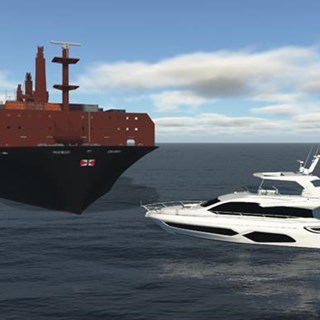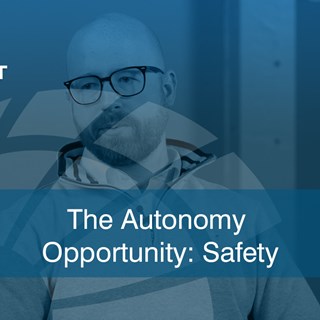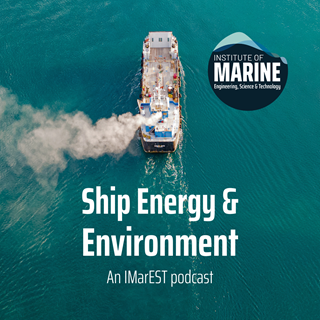
6 October 2025
In 40 decades of consulting, we have seen organisations of every shape and size struggle with complexity. The world is not getting any more complex, but the level of detail we are expected to respond to is; regulatory demands, technological disruption, and shifting stakeholder expectations mean that leaders are constantly navigating choppy waters.
Yet, too often, strategy work is reduced to a checklist or a set of disconnected tools. At the same time, similar and competing organisations are racing to overtake, each with their own distinct approach. What they do changes what you need to do. What’s missing is a way to see the whole system—its purpose, pressures, capabilities, and opportunities for innovation—in one coherent frame.
Imagine, for a moment, you're leading a yacht race. You're exhilarated, the wind is in your sails, and you can see the finish line. Then, a competitor suddenly gains on you. You tack to avoid a collision, but in doing so, you lose speed, giving them the advantage. As you recover, the wind changes, and the tide turns, pushing the entire fleet toward a dangerous sandbank. Now, it's not just about winning; it's about survival.
You recover your wits and get back into the race. The crew pull the sheets (ropes, if you don’t know all the seafaring terms) hard to tighten the sail against the strengthening wind. Your boat gathers pace, but your crew are tiring, and the tide is beginning to turn, so that you don’t only have to contend with the direction of the wind and the other competitors, but the tide is now pushing you, and everyone else, towards a sandbank. Everyone, including you, is now thinking about the safety of the harbour and the winning buoy.
This scenario describes a boat race which stands as a metaphor for how we think about complex organisational change at BMT. We have a strong maritime heritage, but that doesn’t mean we don’t also know a great deal about large organisations and the challenges of creating and sustaining change within them. We have worked with major government departments, public sector agencies and private companies on a wide range of organisational changes, particularly in digital and service transformations. We have lived and breathed our own transformations as well as helped others with theirs.
The sailing metaphor, however, helps to understand and keep track of the primary challenges of complex organisational change. Ultimately, every dynamic and innovative organisation has a winning destination in mind, and a leadership team that must captain that organisation to the destination harbour. Not only do they need a navigational chart, but they must also understand the dynamics of a three-dimensional environment, with rapidly changing circumstance. They also have staff teams and stakeholders who are enthusiastic about success, but not always the same success as the leaders imagine.
The BMT Strategy Canvas acts as your navigational chart, providing a complete view of the transformation. It has been inspired by a deep understanding of systems thinking models and methods, Osterwalder’s business model canvas, Curtis’ social venture canvas and a variety of tried and tested business change models.

The first step is to consider the gold strategic environment of our boat—sorry, our organisation. The boat (in the middle of the left of the picture above, including the Involve and Define environments) has a strategic purpose: to move quickly through the sea, under wind power, carrying crew and equipment. That is what it is designed to do, and that is the intent of the designers and owners. In organisational terms, this is often the constitution, or memoranda and articles of association registered with Companies House.
The strategic goal of the boat is to win sailing yacht races in its class, over the appropriate season, within a certain budget. This should yield the benefit of a cash prize and also a lot of attention and admiration for the owner, skipper and the crew. This is often expressed as a mission, or the goals of the organisation. There are lots of different ways of expressing this, but ultimately it involves a description of where the organisation should be in a given time frame, like over five to ten years.
At the top of the chart are the tides and hazards of political, economic and other strategic pressures and challenges that all other organisations in the same field will encounter. The pressures will be the same, like a tide, but the intensity felt will depend on the design of the organisation and the direction it is sailing, i.e. its strategy.
The three factors of the golden strategic environment cover everything outside our metaphorical boat, so we turn our attention to the vessel itself: the skipper and crew, what they do, and the order in which they operate the sails and other equipment in a disciplined manner (activities), where they steer to and the equipment they use such as navigation instruments. These activities come together in value chains, or an ecosystem of value creation.
It doesn’t stop there on the boat, because a racing yacht also has a ground crew, a dockyard, ship-to-shore communications, insurers and someone to buy refreshments for after the race! These are all supporting capabilities that are essential for the yacht to safely sail, and win. The organisations and people that enable that to happen, even the race organisation committee, are stakeholders. They give us permission and the ability to enter the race, they set the course and make sure we stick to the rules of racing.
Around the outside of our racing yacht, of course, are other vessels. Some are racing in the same team as us, others are competing with us, either honourably or not. Some are just other boats getting in the way, either pedalos, fishing boats or ferries. We must consider all of these aspects and their potential impact when developing our change plan.
With this metaphor of a yacht race to win, the challenge of complex organisational change is to change the direction of the organisation to meet the changing context, whilst still maintaining business as usual operations. Most organisational change models come from the 1950s when the strategic environment was changing less rapidly, and the business models were focused on stable and slowly changing equipment and processes. This meant that major structural changes were rare and broadly undesirable.
In the 21st century, most organisations, even if they are major manufacturing companies, are much more aware of the rapidly changing external environment and the overriding importance of the people in their company rather than the equipment. This is why a digital transformation won’t work unless it’s accompanied by a cultural transformation.
Using the metaphor of the yacht race allows us to think of the organisation as moving towards a set of goals, at pace, and utilising all of its resources, human and infrastructure, to achieve that purpose. At the same time, lots of other organisations are trying to do the same. Sometimes the external changes are such that either a change of navigational strategy is required, or a refit like new sails is necessary to upgrade the capabilities of the yacht and the team.
This can happen in an orderly and planned manner, where the internal crew and equipment capabilities are compared to the external environment, and the causes of mismatches are identified. Then innovation is applied to resolve those mismatches, either by upskilling the crew and upgrading the onboard equipment or just cleaning the seaweed off the bottom of the hull!
Then comes the testing and practising. We won’t be entering another yacht race just yet, but we still need to keep sailing the boat. So, we may need some additional crew, perhaps even redeploying crew from other parts of the yacht or shore crew, to practise the new ways of working with the new equipment, to get it right. The shore crew may know better how to get the best out of the new sails. We also need to ensure that the refit is going to work, so we might practise routines on the shore to make sure that communication between different teams works smoothly and has the effect we need.
When all that is in place, the new equipment practised with new skills and new team members, we can then plan with the navigational charts for the next phase of the racing season.
Although this use of a yacht race metaphor is somewhat light-hearted, we believe that it is a robust and useful way of thinking through the detail of organisational changes in complex and demanding environments. The navigational chart or canvas that we have designed builds on decades of our own experiences within organisational change, and helping our customers with theirs, and uses the most recent research and thinking in the human, cultural and organisational aspects of business transformation.
The BMT Strategy Canvas is a robust tool designed to bring clarity to the most complex transformations. If you're working on a major change and want a better way to navigate the course, contact us on the next page. One of our transformation experts would be happy to share the canvas and walk you through how it can be applied to your specific challenges.

Tim Curtis has a PhD in systems thinking applied to interorganisational change challenges, and has written, and taught, extensively on complexity science and innovation.

Kathryn Walker
Coaching is a proven tool to support change leaders and their teams. The greatest impact and success has been achieved in transformation programmes, where structural and programmatic approaches are supported by attention to the cultural and behavioural aspects of change.

Will Roberts
At BMT, we believe simulation is a critical enabler in overcoming these hurdles—de-risking development, accelerating innovation, and building confidence across the entire lifecycle of autonomous systems.

N/A
Get ready to dive deep into maritime autonomy as we bring you technical experts, insightful opinions, and unmissable discussions.

Dr Thomas Beard - UK / Europe
Episode 3 of IMarEST’s Ship Energy & Environment podcast series, addressed the ‘Realities and Challenges of Alternative Marine Fuels. Dr Thomas Beard, Clean Shipping Lead explores the practical side of the 'big four' alternative fuels.